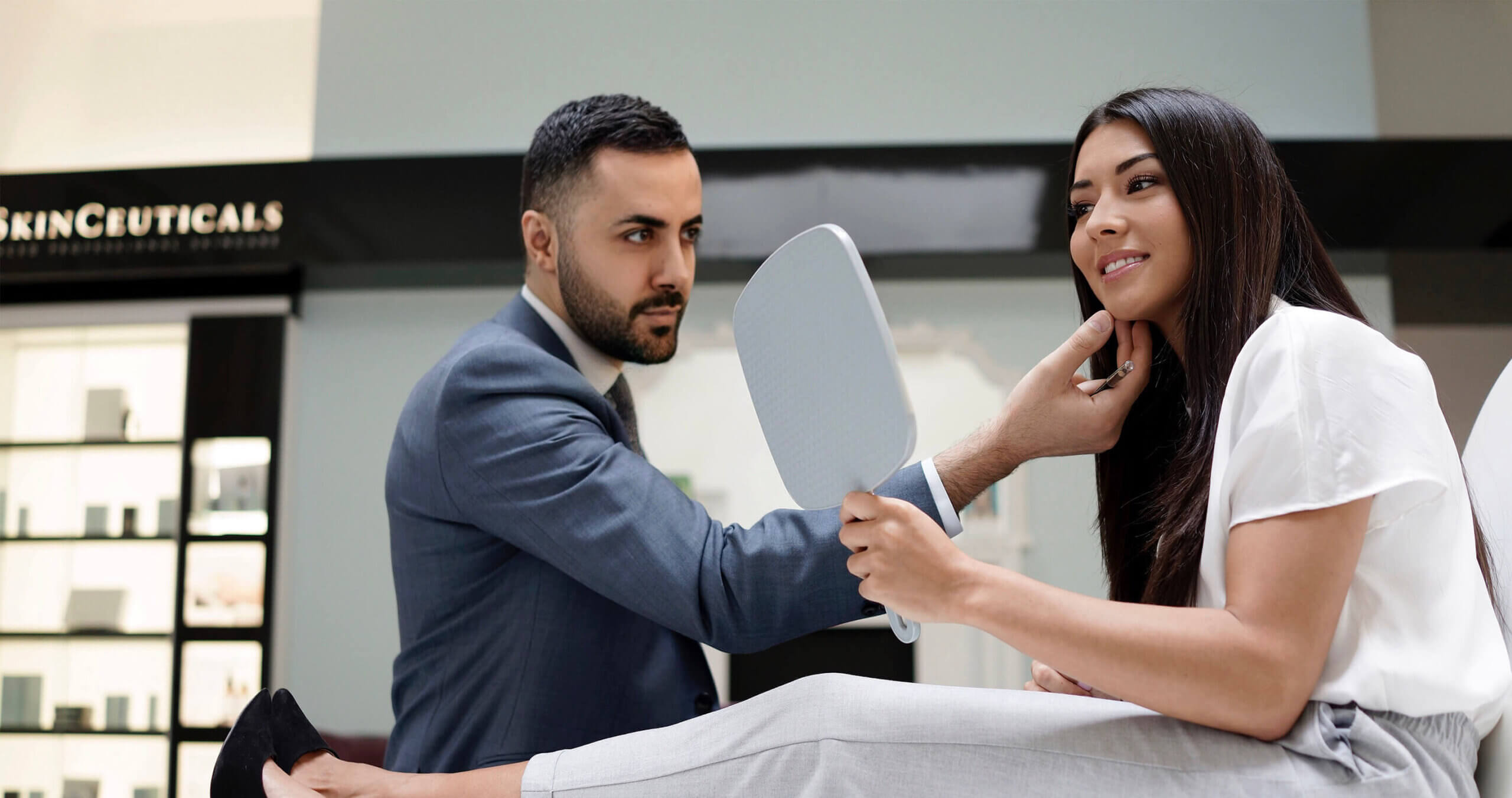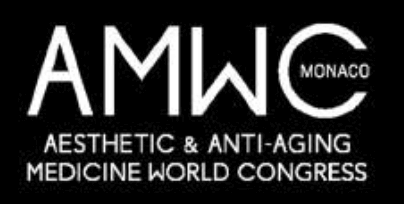Non-surgical rhinoplasty, also referred to as rhinomodulation, is a precise, minimally invasive method of altering the nasal contour using hyaluronic acid (HA) dermal fillers. At Sloane Clinic, we apply this advanced technique to address aesthetic concerns of the nose with a high degree of control, using evidence-based protocols and advanced imaging technologies to support both safety and outcomes.
Mr Dean Rhobaye, a world-leading authority in non-surgical facial aesthetics, has contributed significantly to the advancement of filler-based rhinoplasty techniques. With a background in facial surgery and multiple international aesthetic medicine awards, he applies a comprehensive, anatomical approach to non-surgical rhinoplasty that prioritises natural results and procedural safety.
What Is a Non-Surgical Rhinoplasty?
Rhinomodulation involves reshaping the nose by carefully injecting HA-based dermal fillers into specific anatomical areas such as the nasal bridge, radix, supra-tip, or columella. This technique can:
- Improve dorsal profile irregularities (e.g. dorsal humps)
- Enhance nasal bridge projection
- Refine or elevate the nasal tip
- Address post-surgical contour deficiencies
- Provide visual symmetry to correct mild deviations
By adjusting proportions through structural enhancement, non-surgical rhinoplasty can offer substantial cosmetic improvements without the downtime or invasiveness associated with traditional surgery.
Clinical Planning and Safety Protocols
Non-surgical rhinoplasty involves treatment in an area with complex and variable vascular anatomy. To ensure safety and predictability, we incorporate a multimodal imaging approach at Sloane Clinic:
- 3D Facial Imaging (Canfield Vectra H2): Enables volumetric analysis, treatment simulation, and pre/post-treatment comparisons.
- High-frequency Ultrasound (US): Used to map vascular structures and guide filler placement with real-time precision.
- Magnetic Resonance Imaging (MRI): Employed in selected cases to evaluate pre-existing filler deposits, scar tissue, or complex anatomical variations, particularly in revision treatments.
These technologies allow for highly individualised treatment plans and support optimal outcomes with reduced risk.
Duration and Longevity of Results
Although hyaluronic acid is a biodegradable substance, HA fillers demonstrate significantly longer persistence in nasal tissues than in other facial areas. This is due to several key factors:
- Low tissue mobility: The nose is relatively static compared to regions such as the lips or perioral area.
- Lower enzymatic degradation: Nasal tissues are less exposed to hyaluronidase and mechanical stress.
- Dense tissue structure: HA integrates closely with fibrous and cartilaginous tissues, leading to slower resorption.
Evidence from Imaging Studies
Several imaging-based studies have challenged earlier assumptions that HA fillers dissolve within 6–12 months:
- In a 2024 MRI-based review, HA filler was detectable in the midface 2 to 15 years post-injection in all 33 patients examined, contradicting manufacturer-reported timelines (Master et al., 2024). While these results are based on midface injections, the nose—being a similarly static region—can be expected to show comparable or longer retention.
- A clinical study using 3D volumetric analysis showed stable aesthetic outcomes for up to 48 weeks following nasal HA filler injection, with many patients not requiring re-treatment until well beyond 12 months (Rzepniewski et al., 2024).
- Comparative studies have consistently shown that fillers in the lips degrade more quickly, typically within 6–9 months, due to constant muscle movement and higher blood flow, whereas nasal fillers frequently persist for 12–24 months or longer (Beneduce et al., 2023).
In our clinical experience at Sloane Clinic, initial results commonly last between 12 and 18 months, with longevity increasing over successive treatments. Many patients subsequently require only minimal maintenance treatments every 18–24 months, and often less frequently with time.
Reversibility and Safety Profile
A key advantage of using HA-based fillers is their reversibility. In the rare event that a patient experiences an adverse reaction or is dissatisfied with the outcome, the filler can be enzymatically dissolved using hyaluronidase. This aspect distinguishes non-surgical rhinoplasty from permanent surgical alterations.
While the risk of serious complications such as vascular occlusion or skin necrosis exists, published data indicate that the incidence is very low when procedures are performed by experienced clinicians. A systematic review involving over 8,600 patients undergoing non-surgical rhinoplasty reported a complication rate of only 2.5%, with most adverse events being transient (e.g., bruising or mild swelling) (DeVictor et al., 2021).
Ultrasound guidance, as employed at Sloane Clinic, has been shown to reduce the risk of intravascular injection by identifying the course of critical arteries in real-time (Rocha et al., 2022).
Comparison to Surgical Rhinoplasty
| Feature | Non-Surgical Rhinoplasty | Surgical Rhinoplasty |
| Invasiveness | Minimally invasive (no incisions) | Surgical (osteotomies, general anaesthesia) |
| Downtime | 0–2 days (typically none) | 7–14 days, with extended healing |
| Reversibility | Yes (via hyaluronidase) | No |
| Longevity | 12–24+ months; often semi-permanent | Permanent (with variable long-term tissue changes) |
| Risk profile | Low (in experienced hands) | Higher due to surgical trauma and scarring |
| Suitability | Mild/moderate contour issues | Structural/deviated septum, functional issues |
It is important to note that non-surgical rhinoplasty does not correct functional problems, such as septal deviation or nasal airway obstruction. In such cases, septorhinoplasty remains the appropriate intervention. However, for suitable candidates, non-surgical techniques offer a predictable and effective alternative with lower risk and downtime.
Indications and Limitations
Indications:
- Dorsal hump camouflage
- Radix augmentation
- Tip refinement and elevation (mild to moderate ptosis)
- Asymmetry correction
- Minor post-surgical contour irregularities
- Saddle deformities (mild to moderate)
Limitations:
- Severe structural deficiencies requiring cartilage grafting
- Large bulbous tips with extensive soft tissue bulk
- Functional nasal airway problems
- Severely deviated noses
These limitations are discussed in detail during the consultation process to ensure appropriate patient selection.
Expertise and Approach at Sloane Clinic
Mr Dean Rhobaye is widely regarded as one of the most experienced and recognised authorities in non-surgical rhinoplasty. He has lectured internationally, contributed to national safety guidelines, and is one of few practitioners globally to integrate facial surgery expertise with advanced imaging and injectable techniques.
Our treatment process at Sloane Clinic includes:
- Detailed anatomical assessment using 3D imaging (Canfield Vectra H2)
- Ultrasound mapping of vascular structures prior to injection
- Customised injection plans tailored to facial proportions and aesthetic goals
- Follow-up imaging to assess integration and outcomes
- Ongoing clinical review to optimise long-term results and safety
Conclusion
Non-surgical rhinoplasty is a safe, evidence-based procedure offering long-lasting aesthetic improvements for selected patients. It represents a convergence of anatomical understanding, advanced imaging, and injectable expertise. At Sloane Clinic, we approach each case with scientific precision, prioritising both outcome and patient safety.
For individuals seeking refinement of their nasal appearance without surgery, rhinoplasty using HA fillers provides a highly effective alternative, especially when conducted by an experienced clinician with the appropriate tools and anatomical insight.
Next Steps
If you’re bothered by the appearance pf your nose and want to explore modern, evidence-based treatments, we invite you to schedule a consultation at Sloane Clinic in Harley Street, Central London. For more information:
Call us today or book a consultation to begin your personalised assessment and treatment journey.
References
- Beneduce N, et al. (2023). The longevity of nonsurgical rhinoplasty: A literature review. J Stomatol Oral Maxillofac Surg, 124(1S):101319.
- Master M, et al. (2024). Hyaluronic Acid Filler Longevity in the Mid-face: A Review of 33 MRI Studies. Plast Reconstr Surg Glob Open.
- Rzepniewski P, et al. (2024). Longevity of hyaluronic acid dermal fillers – current state of knowledge. Dermatology Review, 111(1):47–51.
- DeVictor S, et al. (2021). Complications Secondary to Nonsurgical Rhinoplasty: A Systematic Review and Meta-analysis. Otolaryngol Head Neck Surg, 165(5):611–616.
- Rocha P, et al. (2022). Description of a safe doppler ultrasound-guided technique for hyaluronic acid filler in the face – a method to avoid adverse vascular events. J Cosmet Dermatol, 21(7):2783–2788.









